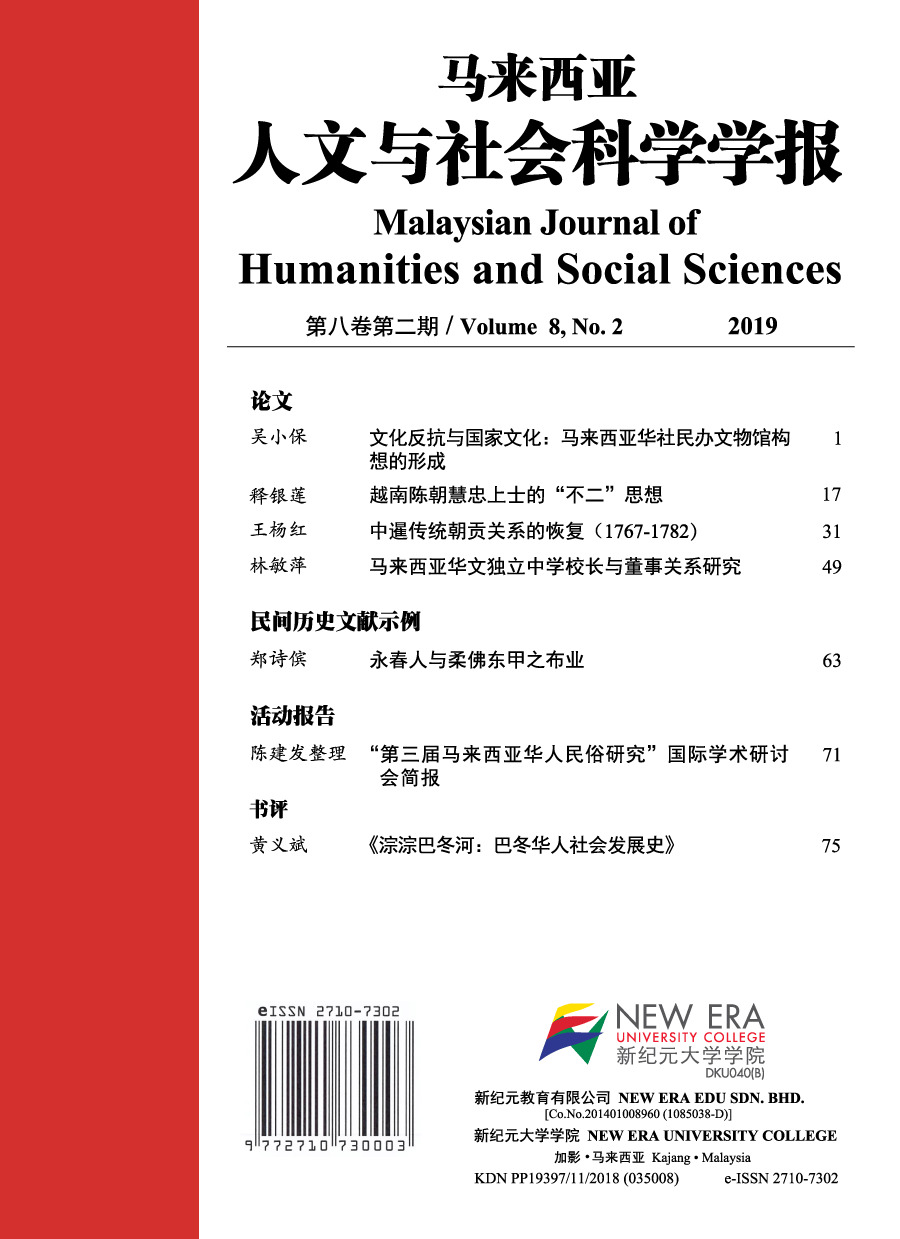文化反抗与国家文化:马来西亚华社民办文物馆构想的形成 Cultural Resistance and National Culture: Establishment of Community Museums by the Malaysian Chinese Community
Keywords:
华社、民办文物馆、文化反抗、国家文化, Chinese society, Chinese community museum, culture resistance, national cultureAbstract
民间文物馆近十多年来开始在马来西亚华人社会中兴起。有别于政府单位资助的官方藏馆,这些新进的文物馆多由华人会馆、基金会或者学校等民间单位筹建。它们的规模、形式、馆藏与叙事,皆因资金、承办单位或个别目的而异,素质也良劳不齐。民办文物馆是基于马来西亚特殊的历史缘由,例如国家对华社的长期边缘化与政策偏差,特别是1971 年起开始实施的国家文化政策,而在华社中酝酿。为了抵抗国家主流叙事,或因自身身分认同的焦虑,或历史义务,华人社会发动起文化自强运动,民办文物馆最初的倡议与构想,就是在这样的政治低压氛围中提出,并慢慢地在华社中扎根与巩固。本文搜集相关史料文献,特别是新闻报导、特刊,整理马来西亚华社自1980年代以来提出的民办文物馆构想,并尝试就此中的历史意义作出分析。
A number of museums have been established by the Malaysian Chinese community in the last two decades. These museums are fully funded and sponsored by Chinese organizations, foundations or schools. Depending on available resources, these museums differ in size, form, and other characteristics. The establishment of community museums may be traced to specific historical roots especially after the introduction of the National Cultural Policy in 1971. Anxious over their identity and the urge to preserve their cultural heritage, the Chinese community began setting up museums as a form of self-empowerment in a testing political environment. This study focuses on the process of the establishment of Chinese community museums from the 1980s, and their significance to the community. The main sources of reference are derived from documents and records that appeared in local newspapers and magazines
published in Chinese.




